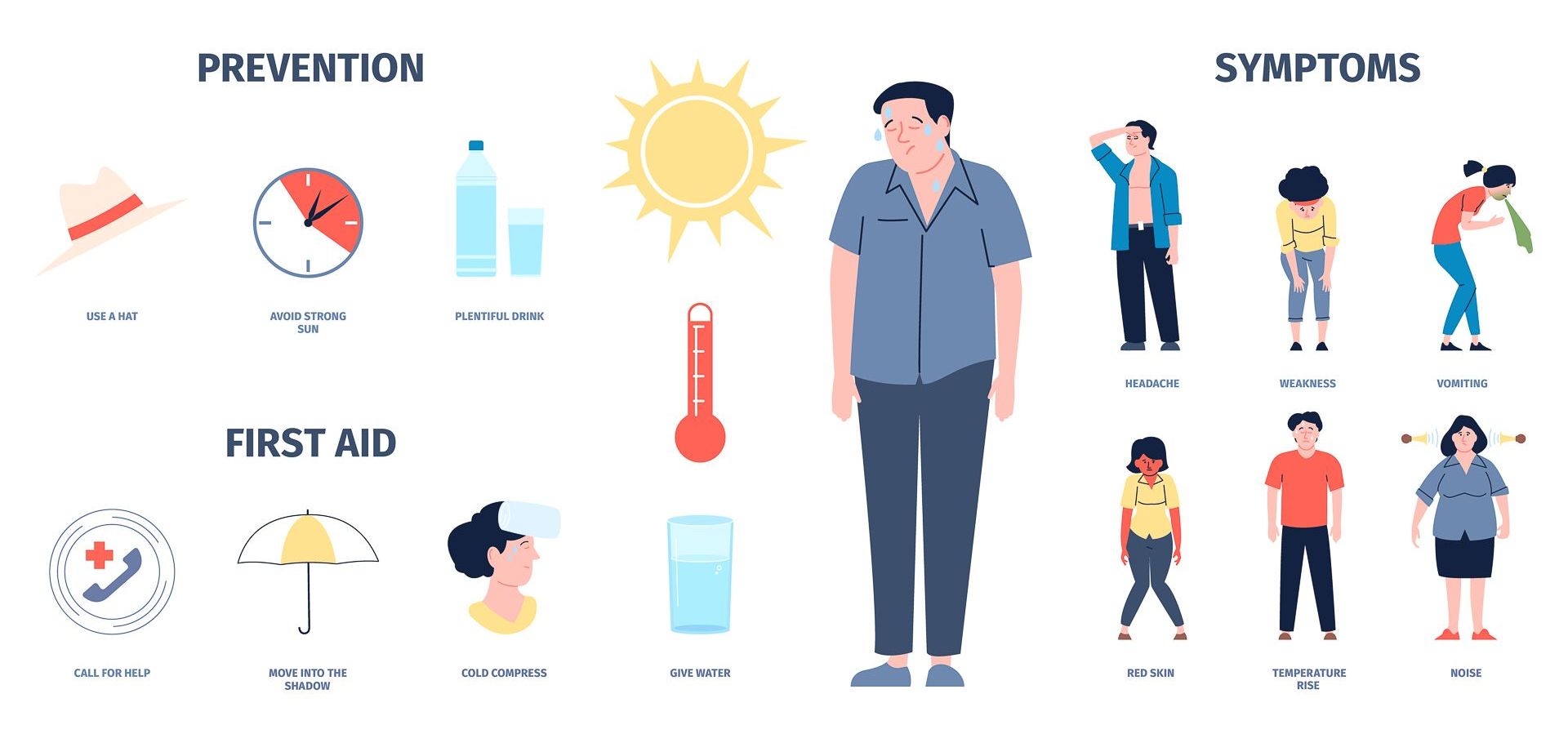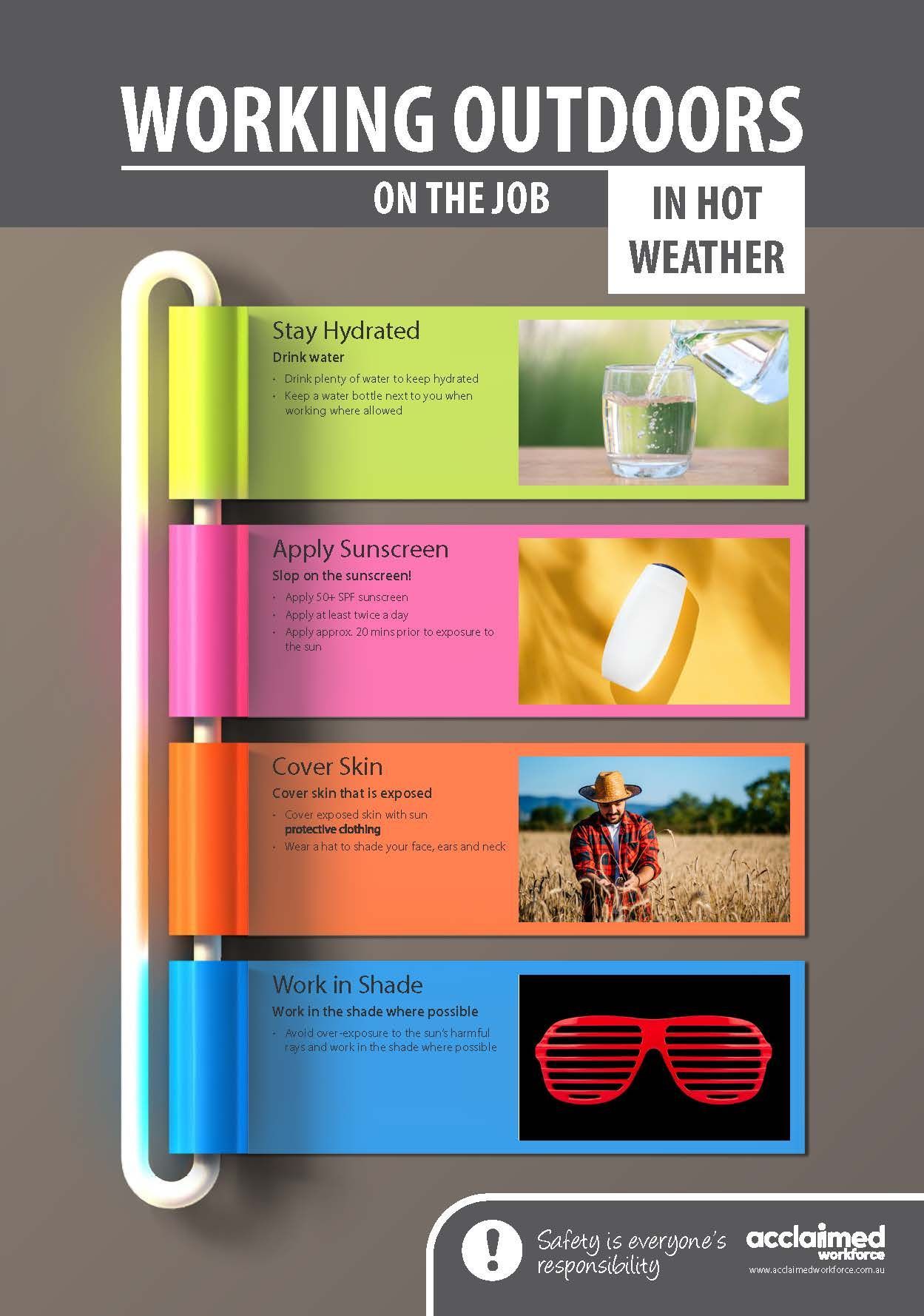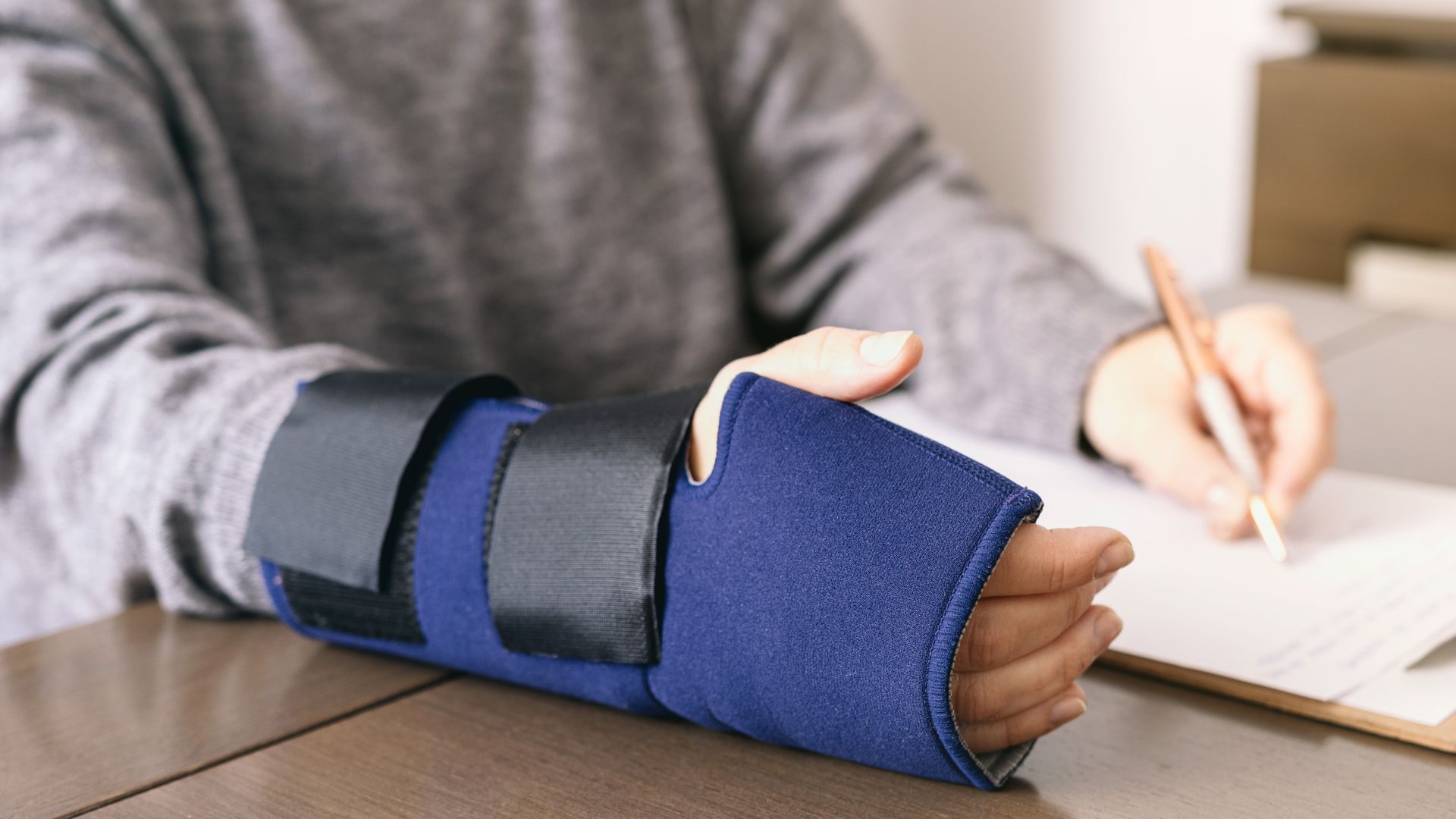Acclaimed Workforce is committed to supporting workplace health and wellbeing and ensuring employees are safe from injury and risk while at work.
We have created a 'Working Outdoors on the Job' poster to reinforce the key messages of staying hydrated, applying sunscreen, covering skin and working in the shade.





